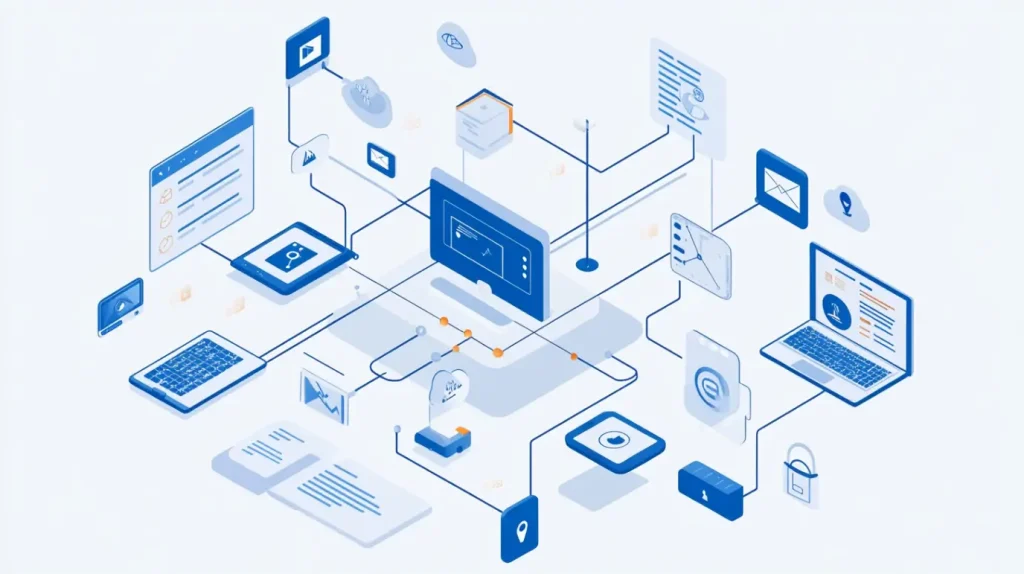Ever wonder what makes some websites pop up on Google searches while others get lost in the digital sea? A big part of it is Technical SEO, and how it plays with your Content Strategy.
Sounds complicated? Don’t worry! This guide will break down the essentials in simple terms, helping you make your awesome content shine.
What’s Technical SEO Anyway?
Think of your website as a house. Your content (articles, images, videos) is the beautiful furniture and decor inside. Technical SEO is like making sure your house has a solid foundation, clear pathways, and well-labeled rooms. It helps search engines like Google easily find, understand (crawl), and show (index) your content to the right people.
It’s not just about pleasing search engines, though. Good technical SEO often means a better experience for your human visitors too – like faster loading pages and easier navigation.
And What’s Content Strategy?
Content strategy is your master plan for creating and managing all that great “furniture.” It’s about:
- Knowing who you’re talking to (your audience).
- What topics they care about.
- What kind of content to create (blog posts, videos, infographics).
- When and where to publish it.
Why Do They Need Each Other? The Perfect Match!
Imagine you’ve written the most amazing blog post ever. But if your website is technically messy, search engines might struggle to find or understand it. That’s like having a masterpiece painting hidden in a cluttered attic!
On the other hand, you could have a technically perfect website, but if your content isn’t interesting or relevant to anyone, people won’t stick around.
Technical SEO Essentials for Your Content Strategy:
Here are key technical bits that make your content strategy sing:
- Clear Site Structure & Easy Navigation:
- What it is: How your pages are organized and linked together. Think of it as the floor plan of your house.
- Why it matters for content: A logical structure helps search engines understand the hierarchy and importance of your content. It also helps users find what they’re looking for easily.
- Simple tip: Use clear categories and tags in WordPress. Make sure your menus are straightforward.
- Crawlability & Indexability:
- What it is:
- Crawlability: Can search engine bots easily explore all the pages on your site?
- Indexability: Can search engines add your pages to their massive library (index) to show in search results?
- Why it matters for content: If bots can’t crawl or index your content, it won’t appear in search results, no matter how good it is.
- Simple tools:
- Robots.txt file: A text file that gives instructions to search engine crawlers about which pages they can or cannot access.
- XML Sitemap: A list of all important pages on your site, making it easier for search engines to find them. (WordPress SEO plugins like Yoast or Rank Math can create this for you!)
- What it is:
- Page Speed:
- What it is: How quickly your web pages load.
- Why it matters for content: Slow pages frustrate users (they might leave!) and search engines prefer faster sites.
- Simple tips: Optimize your images (compress them before uploading), use a good hosting provider, and consider caching plugins for WordPress.
- Mobile-Friendliness:
- What it is: Does your website look good and work well on smartphones and tablets?
- Why it matters for content: More and more people browse on mobile. Google prioritizes mobile-friendly sites. If your content is hard to read on a phone, you’ll lose readers.
- Simple tip: Choose a responsive WordPress theme. Most modern themes are!
- Understanding User Intent (with a nod to Keywords):
- What it is: What is the user really looking for when they type something into Google? Are they trying to learn something, buy something, or find a specific website?
- Why it matters for content: Your content needs to match what users are searching for. While keywords (the terms people search for) are part of this, the intent behind them is crucial.
- Simple tip: Before writing, think: “What problem does this content solve for my reader?” or “What question does it answer?”
- Internal Linking:
- What it is: Linking from one page on your website to another relevant page on your own website.
- Why it matters for content: It helps search engines discover more of your content and understand the relationship between different pieces. It also keeps users engaged by guiding them to related information.
- Simple tip: When you write a new post, think if you can link to older, relevant articles you’ve written.
- Structured Data (Schema Markup) – A Bit More Advanced, But Powerful!
- What it is: Special code you can add to your website to tell search engines exactly what your content is about in a very organized way (e.g., this is a recipe, this is an event, this is a product).
- Why it matters for content: It can help your content appear in search results with “rich snippets” – like star ratings, cooking times for recipes, or event dates. This makes your listings more attractive!
- Simple tip: SEO plugins for WordPress often have features to help you add basic structured data.
Making it All Work Together:
- Plan Ahead: Think about these technical elements before you create content. For example, if you’re planning a series of articles, think about how they will link together.
- Audit Regularly: Occasionally check your site for technical issues. Google Search Console is a free tool that can help you spot problems.
- Focus on User Experience: Ultimately, good technical SEO and good content strategy both serve the user. If your users are happy, search engines are more likely to be happy too.
Technical SEO isn’t a one-time fix; it’s an ongoing part of managing a successful website. By understanding these essentials and how they connect to your content strategy, you’re well on your way to helping your site reach its full potential. You’ve got this!



